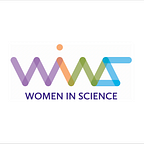Celebrating Indigeneity in Science
Indigenous women scientists and scholars share resources and actions to learn, celebrate and support Indigenous knowledge and thought in science.
Indigenous communities have a long tradition of learning from the land and the sky, and sharing knowledge through storytelling. In an online conversation on International Women’s Day 2021, Indigenous women physicists and scholars talked about their work and their personal journeys.
This discussion yielded valuable resources and actions for building a vibrant and inclusive scientific community:
- Example of Land Acknowledgement in academic publications
- Indigenous Science Technology and Society
- Canadian Indigenous Science and Engineering Society
- Society of Indigenous Physicists
- Connecting students from remote communities to post-secondary opportunities
- Qalipu First Nation
- Indigenous Canada Course (University of Alberta)
- Mapping Indigenous lands
- Indigenous Peoples: Language Guidelines
- Indigenous Allyship Toolkit (Laurier)
- Centre for Indigegogy (Laurier)
- Indigenous Corporate Training Inc
Participants
- Julia Doucette-Garr, Student, University of Saskatchewan, Founder of the first student chapter of the Canadian Indigenous Science and Engineering Society
- Laurie Rousseau-Nepton, Resident Astronomer, Canada-France-Hawaii Telescope, First Indigenous woman to get a PhD in astrophysics in Quebec
- Angela Brockway, Experience Development Officer, Qalipu First Nation, Newfoundland and Labrador
- Jessica Kolopenuk, Assistant Professor, Faculty of Native Studies, University of Alberta
The virtual event was jointly supported by the Canadian Association of Physicists, the Laurier Centre for Women in Science, Memorial University of Newfoundland, NSERC PromoScience and the Canadian Commission for UNESCO.
Wilfrid Laurier University, where the virtual event was hosted, is located on the traditional territory of the Anishnawbe, Haudenosaunee and Neutral peoples. The organizers thank them for the use of their land.
This land has been cared for, loved, and stewarded by the Anishnawbe, Haudenosaunee and Neutral peoples since time immemorial. Kitchener-Waterloo and Brantford are located on the Haldimand Tract, which, on October 25, 1784, after the American Revolutionary War of Independence, was given to the Six Nations of the Grand River and Mississauga’s’ of the Credit First Nation by the British as compensation for their role in the war and for the loss of their traditional lands in Upstate New York (www.sixnations.ca, http://mncfn.ca). Of the 950,000 acres given to the Haudenosaunee (six miles on either side of the Grand River, all the way along its length), only 46,000 acres (less than 5 per cent) remain Six Nations land (www.sixnations.ca) and 6,100 acres remain Mississauga’s of the Credit land.
The first step in a land acknowledgment is to do just that, acknowledge the land we are living and working on. The real work comes in taking action using the resources above to make science more inclusive.
Join our mailing list to receive new WinSights articles on research-backed resources for inclusive science.
Summary by E. Hennessey, S. Hennessey and S. Ghose
